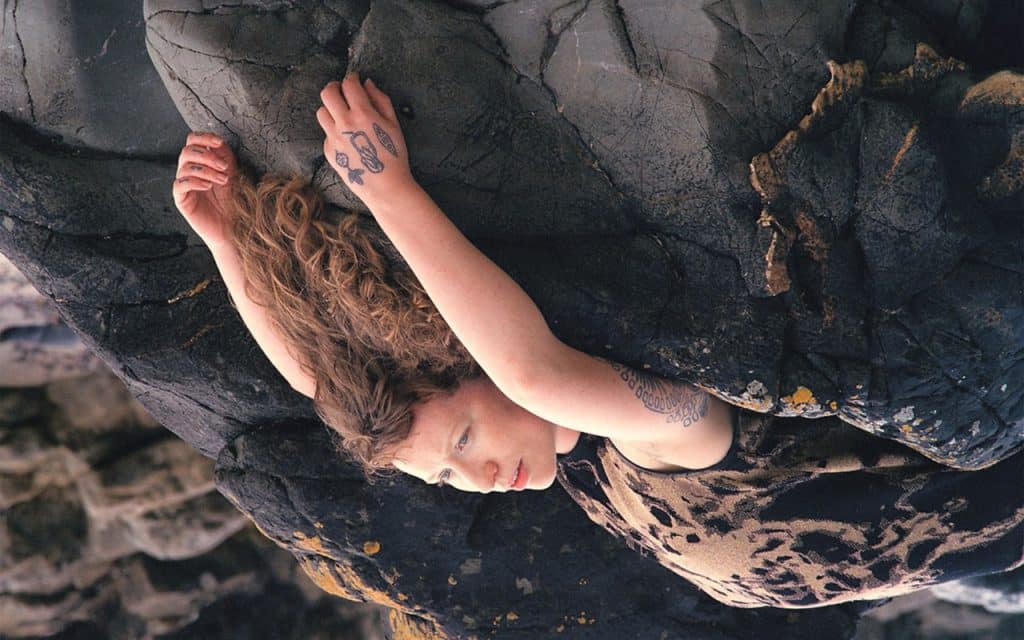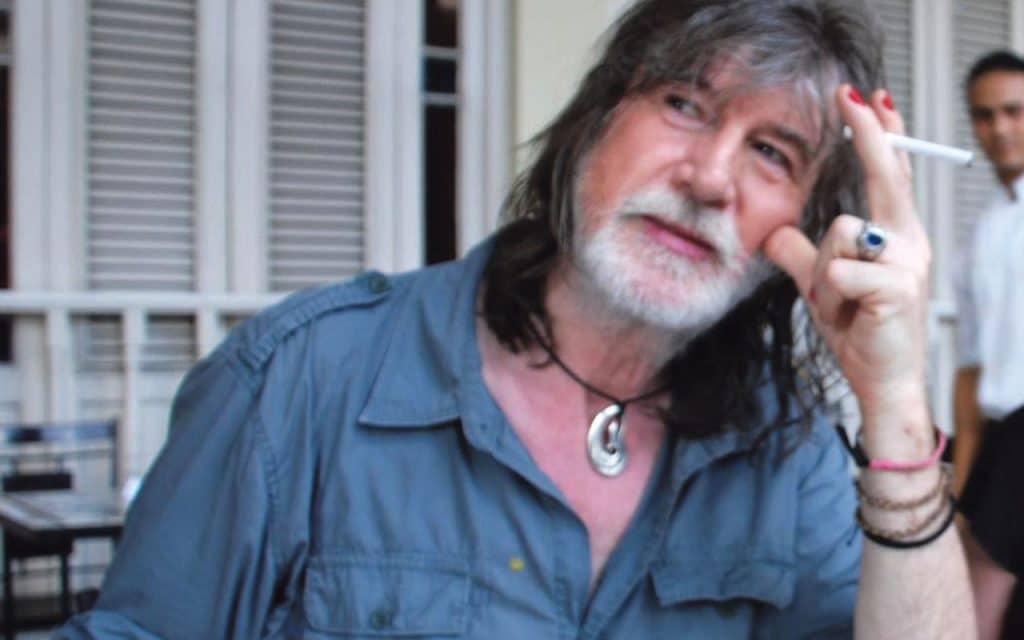
Craig Cox reviews ‘All At Once Collapsing Together’, an exhibition of new work by Caoimhín Gaffney showing at The West Cork Arts Centre in Skibbereen.
Using multi-screen film, photography, text and neon sculptures, shifting personifications of nature voice Gaffney’s concerns about the balance of influence between humans and the environment.
The collection feels like a singular piece of art comprised of interrelated aspects realised through different media. Each piece feeds into the whole: revealing, commenting on and, at times, contradicting the sub-text of the surrounding works.
The centrepiece is a two-screen film sharing its title with the exhibition. Two female presenting performers, costumed in sack-like brown dresses or skin-coloured body socks, move through bog scrub, heather, grass and stone while voicing characters that shift from a passing cloud to food caught in a carnivorous plant to the Earth itself. These twisting perspectives reflect on our teetering balance of reliance, sustenance, sensuality and destruction with the planet.
The two-screen format gives ambiguity to the characterisations by offering different perspectives from which to consider scenes. In one section, on the left screen a performer curls inside a pool of clouded water surrounded by long grass while, on the right, the same pool is shot close up and from above, removing location context and giving the impression of the speaker adrift in a fog.
The physicality of the performers shifts in each scene, from stoically removed to tactilely engaged to frustratedly uncomfortable, their movements realising the confused fit of humans within nature. In a particular scene, one performer contorts within a red, muscle-like recess while the other speaks as the Earth, describing the former as both sustenance and a partner to who’s discomfort it is indifferent.
There is a muted psychedelia to the film, identities shifting quietly through a palette brown, green, heather purple and the blue/grey of bodies of water. This spreads through the rest of the exhibition, its rhizome-like character manifests in the fact that other works take their title from the film’s text.
This is apparent in a beautifully subtle way, as the film is audible throughout the gallery. At serendipitous moments, the title of a photograph or neon sculpture will sound while being viewed. This intertwines and occasionally illuminates the work under consideration. For example, in one corner the words “a missing sound” are written in blue neon. As I was considering the phrase, it echoed from a section of the film reflecting on the discovery of a poisoned white-tailed eagle somewhere in rural Ireland.
The revelatory effect of Gaffney’s titling recurs through the exhibition. One photograph, of a performer curled at the foot of a sand dune, seemed at first a quick metaphor for human effect but its title (‘And You Leave The Rest Of Yourself Behind’) opened the work into a consideration of bodily disintegration, of how we are both of the Earth and an impression left upon it.
In another photo, a moss dense pile of rocks slimy with viscous water is titled ‘A Warm Mouth Swallowing’. The words exaggerate the uncomfortable tactility of the image and extend on the previously mentioned performer’s discomfort in the film work, both anthropomorphising the Earth as an unromanticised body; a thing of effluent and sensuality that gains sympathy, as it loses otherness while also, somehow, becoming more alien.
There is a hallucinatory quality to much of the work. In the text/photographic piece ‘Pentaptych (A concentration of time)’ the ingestion of psilocybin, or magic mushrooms, is directly spoken about, leading to an observation of fractal patterns in clouds and the geometric movement of bees. The work effectively realises the perceptual dilation of a hallucinogenic experience but Gaffney adds depth by reflecting on the tendency to use nature as a vehicle for traumatic healing without considering the trauma that use might inflict.
Overall, ‘All At Once Collapsing Together’ is an intriguing exhibition. It reflects on our conflicted relationship with nature in a way that is accessible and cleanly designed while also full of ambiguity and opportunities for nuanced consideration.
All At Once Collapsing Together, Caoimhín Gaffney @ Uilinn: The West Cork Arts Centre, January 11-February 15.
Craig Cox is an artist and adult education teacher living in West Cork. His art is a combination of field recordings, interviews, text and experimental music, frequently made for radio. Examples can be heard on his Bandcamp page.


